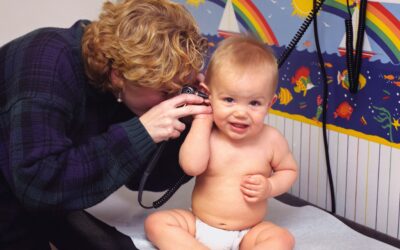It was only thanks to Lena Maas, BCT friend and playgroup leader, that I found out my son Alexis had diabetes. She had remarked on how tired I looked and I explained that for some weeks now he’d suddenly started wetting the bed at night. And sometimes not just once a night, but several times.
We’d seen our GP and had run tests for a urine infection or bladder abnormalities, but nothing was showing up. ‘I hope it’s not like my friend’s son,’ said Lena. ‘But no, I’m sure it’s not.’ ‘Why? What was wrong with him?’ I asked. ‘Diabetes,’ she said.
Diabetes, or diabetes mellitus, is a chronic illness in which the body stops producing or can’t produce enough insulin. Insulin is a hormone produced by the pancreas. Insulin acts like a key, opening a door to let the sugar out of the blood and into the body’s cells.
Failure to produce enough insulin leads to an increase in our blood sugar levels. Over time, this can cause damage to our body’s organs and tissues, and even the failure of some.
Type 1 diabetes is more common in children. It is usually caused by an auto-immune reaction where the body’s defence system attacks the cells that produce insulin. People with type 1 diabetes produce very little or no insulin.
Type 2 diabetes, in which the pancreas produces some insulin, but not enough to meet the body’s needs, usually sets in later in life. It is characterised by insulin resistance and relative insulin deficiency, either or both of which may be present at the time diabetes is diagnosed. Other types of diabetes also exist, such as gestational diabetes, which one in six women experience during pregnancy. Alexis has type 1 diabetes.
The International Diabetes Federation (IDF), based here in Brussels, estimated that, in 2013, around half a million children aged under the age of 15 were living with type 1 diabetes worldwide. Europe has the highest prevalence of children with type 1 diabetes, with 129,400 children in the region. (www.idf.org/diabetesatlas)
‘The number of children developing this form of diabetes every year is increasing by 3% each year, especially among the youngest children,’ the IDF says. ‘In a growing number of countries, type 2 diabetes is also being diagnosed in children.’
We do not really know what causes type 1 diabetes. Diabetes is not contagious. It is thought to be partly genetic and partly triggered by an external factor, such as an illness or stress. Type 2 diabetes can be linked to sedentary behaviour and an unhealthy diet, although some people may also have a genetic predisposition to type 2.
Common symptoms and treatment
Common symptoms of diabetes are frequent urination – the body’s way of trying to eliminate excess sugars, increased thirst and/or hunger, weight loss and a lack of energy. Other symptoms include blurred vision, a tingling feeling or numbness in the hands and feet, frequent infections, slow-healing wounds and nausea or vomiting.
The symptoms may be mild in those with type 2 diabetes and more pronounced in those with type 1. If you show any of these signs or symptoms, you should consult a medical professional and request a blood test. That’s exactly what we did. Within 24 hours of being diagnosed my son was admitted to Saint Luc hospital in the west of Brussels. He was started immediately on insulin and we spent a week there learning the kind of lifestyle changes we would have to make to keep him healthy. The care could not have been better. We had a team of doctors, nurses, psychologists and nutritionists to guide and advise us. We are very lucky.
Alexis is insulin-dependent and will be for the rest of his life. Type 2 and gestational diabetes can often be controlled by making dietary changes, keeping active and taking medication. We give him two injections in the morning (a fast-acting insulin, which covers breakfast and the morning snack, and a slow-acting insulin that kicks in around lunchtime) and two at night. He may also need additional injections if he has very high blood sugar levels during the day. His teachers, his father and I keep a check on this by monitoring his blood sugar levels regularly throughout the day using a simple finger-prick test. We make adjustments if necessary – insulin when his blood sugar is too high and juice or dextrose tablets when it is too low.
In addition, he has to stick to a healthy diet, regular mealtimes and take regular exercise. Sweets and juice are out, unless he has low blood sugar, when we can make an exception. And he has to eat a carefully controlled amount of carbohydrates at each meal. Contrary to what many people expect, however, he can enjoy some treats such as cake, biscuits and chocolate, as long as they are eaten at the right time of day and in limited quantities.
There are different ways you can manage diabetes. Some people prefer to wear an insulin pump, which is programmed to give regular shots of the hormone, rather than to have to inject it manually. Some people choose to eat as much as they like and then calculate the amount of insulin needed based on the number of carbohydrates eaten. Normally doctors and specialist nurses will discuss the options with the family and try to find a regime that fits best with the person’s existing routine.
A friend told me that when she found out her daughter had diabetes she felt the world had ended. I wouldn’t say it was quite like that for me. It was maybe more a gradual realisation that we would be fighting a battle. Looking after a child with diabetes is no walk in the park. It requires a strict regime, regular testing (including at night) and a strong will. We chose to make changes for the whole family. That way Alexis doesn’t feel punished or left out. But his sisters sometimes do.
It is harder to let go and let others take care of your child with diabetes. I hesitate before agreeing to playdates, birthday parties and summer camps. Even leaving him with friends or my parents isn’t easy. And I worry about him every day he is at school. I know his carers need to be on the ball. But in time he will learn to take control and manage his diabetes himself.
Common symptoms of diabetes
- Frequent urination
- Excessive thirst
- Increased hunger
- Weight loss
- Tiredness
- Lack of interest and concentration
- A tingling sensation or numbness in the hands or feet
- Blurred vision
- Frequent infections
- Slow-healing wounds
- Vomiting and stomach pain (often mistaken as the flu)
Alexis himself often gets fed up with the constant tests and injections. He just wants to play and pig out on pizza occasionally like his friends do. But he’s strong and I am often bowled over by the maturity he shows in dealing with this. He does his blood tests at school himself. He refuses sweets politely, telling people he can’t eat them (and often adding that he can eat chocolate, though). He lives as normal a life as he can. We see the team at Saint Luc’s once every two or three months to discuss how things are going and to check that Alexis’ diabetes isn’t doing any damage to his body. So far everything is ok.
People with type 1 diabetes are now able to live full and healthy lives. Teams of young people with diabetes have completed expeditions to Kilimanjaro and Machu Picchu, competed in the Olympics, NASCAR and many other sports. People with diabetes have been inspired to embark on careers as chefs, scientists, policy makers and doctors. While diabetes is a challenging condition, it is no longer a barrier to success.
The International Diabetes Federation is the global voice of people with diabetes. The Federation has launched the Kids and Diabetes in Schools (KiDS) project, which aims to foster a supportive school environment that creates a better understanding of type 1 and type 2 diabetes. The information pack is divided into sections for teachers, parents of children with diabetes, parents generally and children with type 1 and type 2 diabetes. It is available for download in eight languages, free of charge, at www.idf.org/education/kids.
By Sharon Levrez
This article was first published in the November/December 2014 edition of the BCT’s Small Talk magazine.






